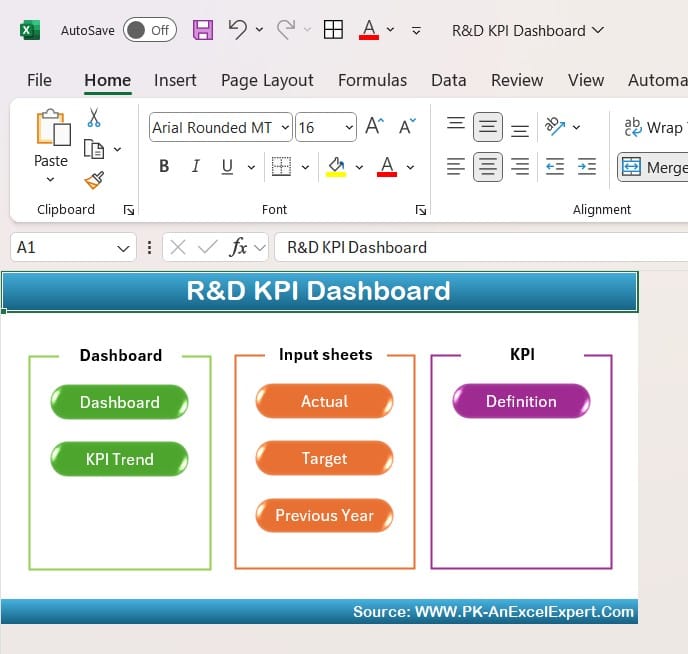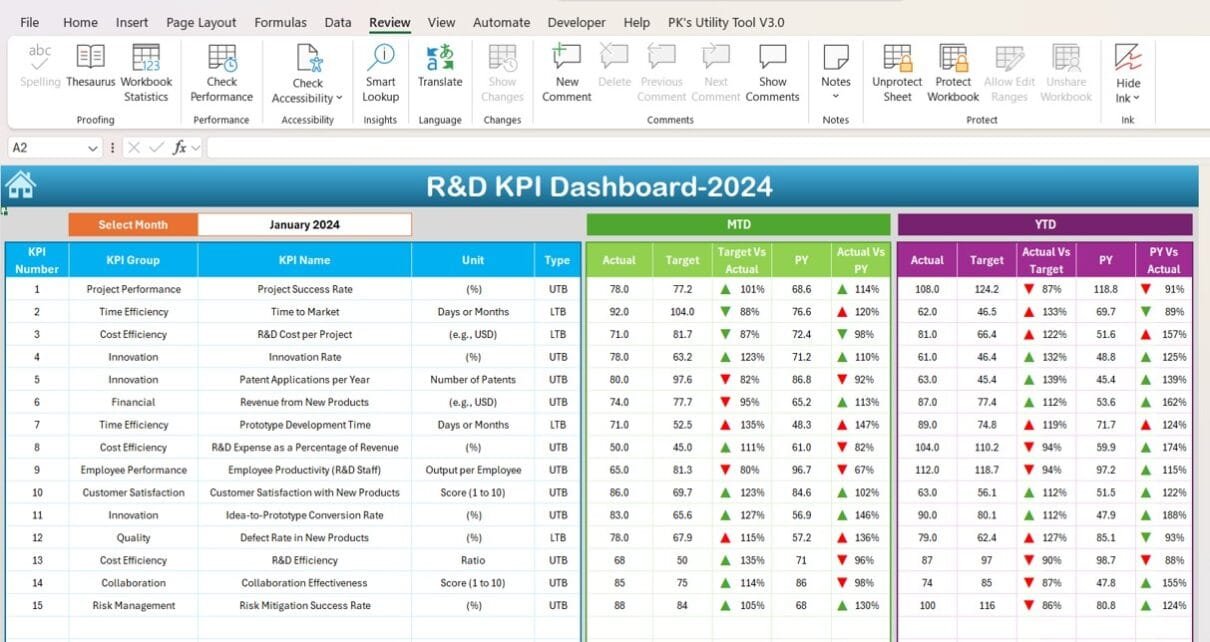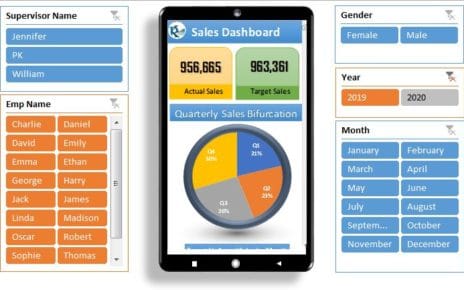R&D KPI Dashboard In today’s highly competitive business environment, the success of a company often hinges on its ability to innovate and stay ahead of the curve. Research and Development (R&D) is at the heart of that innovation, responsible for creating new products and improving existing ones. However, as can be resource-intensive, businesses need a reliable way to measure the effectiveness of their investments. That’s where an KPI Dashboard comes in handy.
An R&D is a powerful tool that allows teams to track key metrics, make informed decisions, and ensure that efforts align with the company’s overall strategy. In this article, we’ll walk you through what an R&D is, the essential KPIs to track, and best practices for building an effective dashboard that drives productivity and innovation.
What is an R&D KPI Dashboard?
Simply put, an R&D is a visual tool that displays real-time performance metrics to track the success of research and development activities within an organization. By presenting in a clear, easily digestible format, this dashboard provides a snapshot of how well the R&D department is performing across various areas, such as project timelines, budget management, and product development.
With real-time data visualized through charts, graphs, and trendlines, R&D teams can quickly spot any issues, optimize processes, and make data-driven decisions. Moreover, the dashboard helps keep everyone on the same page, ensuring alignment with the company’s business objectives.
Key Features of an Effective R&D KPI Dashboard
To ensure the dashboard works effectively, it should include several key components. Here’s a breakdown of what an ideal R&D Dashboard should include:
Home Sheet
Think of this as the dashboard’s “welcome page.” It provides easy navigation, allowing users to jump to different sections, like the Trend Sheet or the Target Sheet.

Dashboard Sheet
This is where the most important data is displayed, including Month-to-Date (MTD) and Year-to-Date (YTD) performance. Visual indicators like arrows and color-coded formatting help quickly highlight trends and areas that need attention.

KPI Trend Sheet
Here, you can view historical performance trends for each KPI, making it easier to track long-term progress and identify recurring patterns.

Actual Numbers Sheet
This is where you enter real-time data for your KPIs, ensuring the dashboard reflects the most up-to-date performance.

Target Sheet
The Target Sheet allows you to set performance goals for each KPI, offering a comparison against actual performance to evaluate progress.

Previous Year Data Sheet
This section stores data from the previous year for comparison purposes, helping you identify improvements or areas that need attention.
KPI Definition Sheet
Here, you’ll find the name, formula, and definition for each KPI, ensuring everyone understands the metrics being track
Advantages of Using an R&D KPI Dashboard
There are several key benefits to using an R&D :
- Improved Decision-Making: With real-time data at your fingertips, R&D managers can make informed decisions that are aligned with business goals.
- Increased Efficiency: By identifying performance trends and bottlenecks, teams can streamline processes and improve overall productivity.
- Enhanced Accountability: A dashboard provides visibility into each team member’s contributions, encouraging accountability and ownership of performance.
- Better Alignment with Business Goals: The dashboard ensures that R&D activities are on track with the company’s strategic objectives, creating more focused efforts.
Opportunities for Improvement in R&D
While an R&D KPI Dashboard can provide immense value, there’s always room for improvement. Here are some areas to focus on for continuous optimization:
- Resource Allocation: Use the data to prioritize high-value projects and ensure that resources are allocated efficiently.
- Collaboration and Communication: Foster stronger communication across R&D teams to drive better collaboration and innovation.
- Ongoing Training: Encourage continuous learning to ensure that your R&D team stays ahead of industry trends and best practices.
Best Practices for Building an Effective R&D KPI Dashboard
To ensure your R&D KPI Dashboard delivers maximum value, follow these best practices:
- Select Relevant KPIs: Focus on metrics that are directly tied to your business goals, and avoid cluttering the dashboard with unnecessary data.
- Update Data in Real-Time: Ensure your data is refreshed regularly so decisions are based on the most current information.
- Keep It Simple and Visual: Use charts, graphs, and color-coded indicators to make the data easy to understand at a glance.
- Involve Key Stakeholders: Engage relevant stakeholders in the design process to ensure the dashboard meets their needs.
- Review and Refine Regularly: Continuously assess the dashboard and adjust it to reflect changes in business goals or R&D strategies.
Frequently Asked Questions (FAQs)
- What is an R&D ?
An R&D Dashboard is a visual tool that tracks the key performance indicators for R&D activities, helping teams monitor progress and optimize performance.
- How do I create an effective R&D ?
Start by selecting relevant KPIs, ensure real-time data updates, and use visual aids like graphs and charts to make data interpretation easier.
- What are the key KPIs for R&D?
Some of the most important for R&D include New Product Introductions, Time to Market, R&D Spend vs. Budget, and ROI.
- How does an R&D Dashboard improve team performance?
By offering clear visibility into performance trends and goals, the dashboard encourages transparency, boosts accountability, and helps teams stay focused on business priorities.
Conclusion
An R&D KPI is a valuable tool that helps organizations track and optimize their research and development activities. With real-time insights into critical KPIs, it enables R&D teams to make data-driven decisions, improve efficiency, and align efforts with overarching business goals. By following the best practices outlined in this article, you can ensure that your R&D department is on track to drive innovation and contribute to the success of your company.
Visit our YouTube channel to learn step-by-step video tutorials



